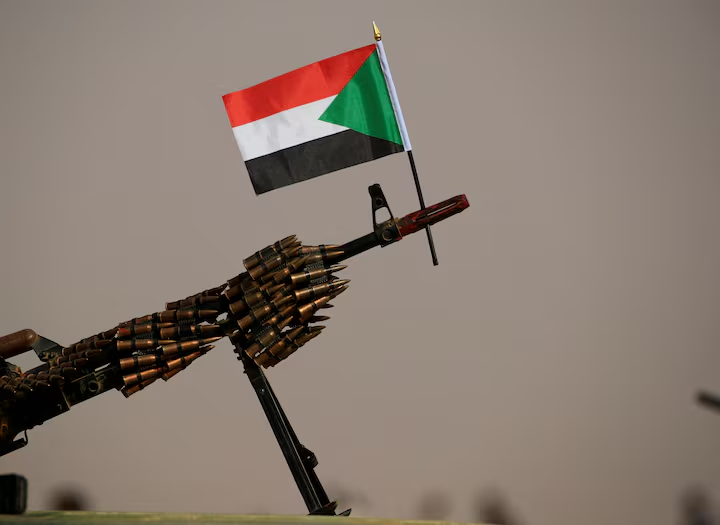Author: Maina Waruru
KAJIADO, Somalilandsun— Until recently, the Maasai youth in Kenya’s southern region saw only one occupation in their future: cattle keeping. It’s what generations of their tribesmen had done before them and was the only job that qualified them as men in this staunchly patriarchal community that sees livestock as everything, the sole measure of wealth.
Now things are changing. The community along the border with Tanzania is gradually opening up to the larger world, and Kenya’s recent spate of droughts has made livestock an unreliable source of income. That is why some young men are embracing a supplementary vocation that was once totally alien to the region: solar entrepreneurship.
“I can now proudly say that I have acquired skills that supplement the income that I get from herds, (and that is) my expertise in both solar installation and entrepreneurship,” said a proud Ole Kenta, one of the region’s new young solar experts.
Through selling solar panels and working as a solar technician on the expansive savannah, he said he now earns more than $200 a month – and plans to use some of the cash to expand his livestock herd.
“Solar entrepreneurs are people trained on two levels: as salesmen and distributors of lights, and as technicians capable of installing panels and carrying out repair and maintenance work,” said Jeroen Pool, head of Solar for Sub-Saharan Africa Communities and Schools (S3C), a Netherlands-based foundation and social enterprise that is providing training and support for the scheme.
In 2011, S3C came to Kenya’s Maasai-inhabited Kajiado region with the aim of bringing solar power to schools, which suffered from a lack of lighting, and to homes that were relying on woodfire to light up the dark nights.
TECHNICIANS KEY
But the organisation quickly realised that even if it was able to link every school to a solar-lighting system, there was nobody who knew how to keep those systems up and running.
“We discovered that qualified technicians were few and only found in major towns where their skills were hardly needed,” said Pool. “As such our aim to provide schools with solar power could not succeed.”
So S3C shifted its focus to making sure there were enough people qualified to keep the lights on. “Our target after all was areas that were off-grid and were not going to be on-grid in the foreseeable future,” said Pool. “That’s why we decided to bridge the gap by training technicians in remote areas where their skills were most needed.”
The program started by training 43 entrepreneurs as technicians and sales staff to sell portable solar lights know as Waka Waka (“to shine” or “light up”) to households. The lamps, which cost 2,000 shillings ($23) each, are about the size of a pocket radio, weigh less than 300 grams and can provide light for up to eight hours before needing to be recharged.
Young Maasai — mostly men — who successfully complete a 10-day training course can then find work installing solar panels on schools (with funding from S3C) and selling lanterns to homes.
Since the start of 2013, 70 or so trainees have sold more than 200 lanterns, and eight primary schools have been fitted with solar lighting funded by the organisation.
“We plan to connect some 12 more schools this year but progress is being hampered by the heavy rains that have persisted in Kenya since March,” said Charles Kemori, head of the organisation’s Kenya programme. By 2018, S3C hopes to have 200 schools hooked up to solar lighting.
CHANGING LIFE – FOR MEN?
Access to solar power is changing lives in remote southern Kenya, where no one expects to be plugged into the electricity grid any time soon. Schools now offer remedial teaching at night and early in the morning, something previously unheard of in the community.
Cattle herders are able to charge their mobile phones at schools for small fee, which in turn earns the institutions an income. And solar power in households has made life easier in an area blessed with abundant sun and livestock but starved of development by authorities.
Men in particular, being owners of wealth in the community, are buying the Waka Waka lamps in large numbers to light their huts. “Unfortunately men do not share their prized possessions with their families,” said S3C’s Pool. “Being relatively poor, the women are pooling their funds together in groups to buy the lamps.”
Maina Waruru is a freelance science journalist based in Nairobi.
Source: Thomson Reuters Foundation






























![Somalia: How I silenced the ghosts of war” Ex KDF Sniper KDF spokesman Joseph Owuoth during a press conference at Defence Forces Headquarters in Nairobi. [Boniface Okendo,Standard]](https://i0.wp.com/somalilandsun.com/wp-content/uploads/2025/01/3weEEfVsWimjDyp6nescuDdu3NvvhMEIbD5Dcc9l1.png?resize=100%2C70&ssl=1)





